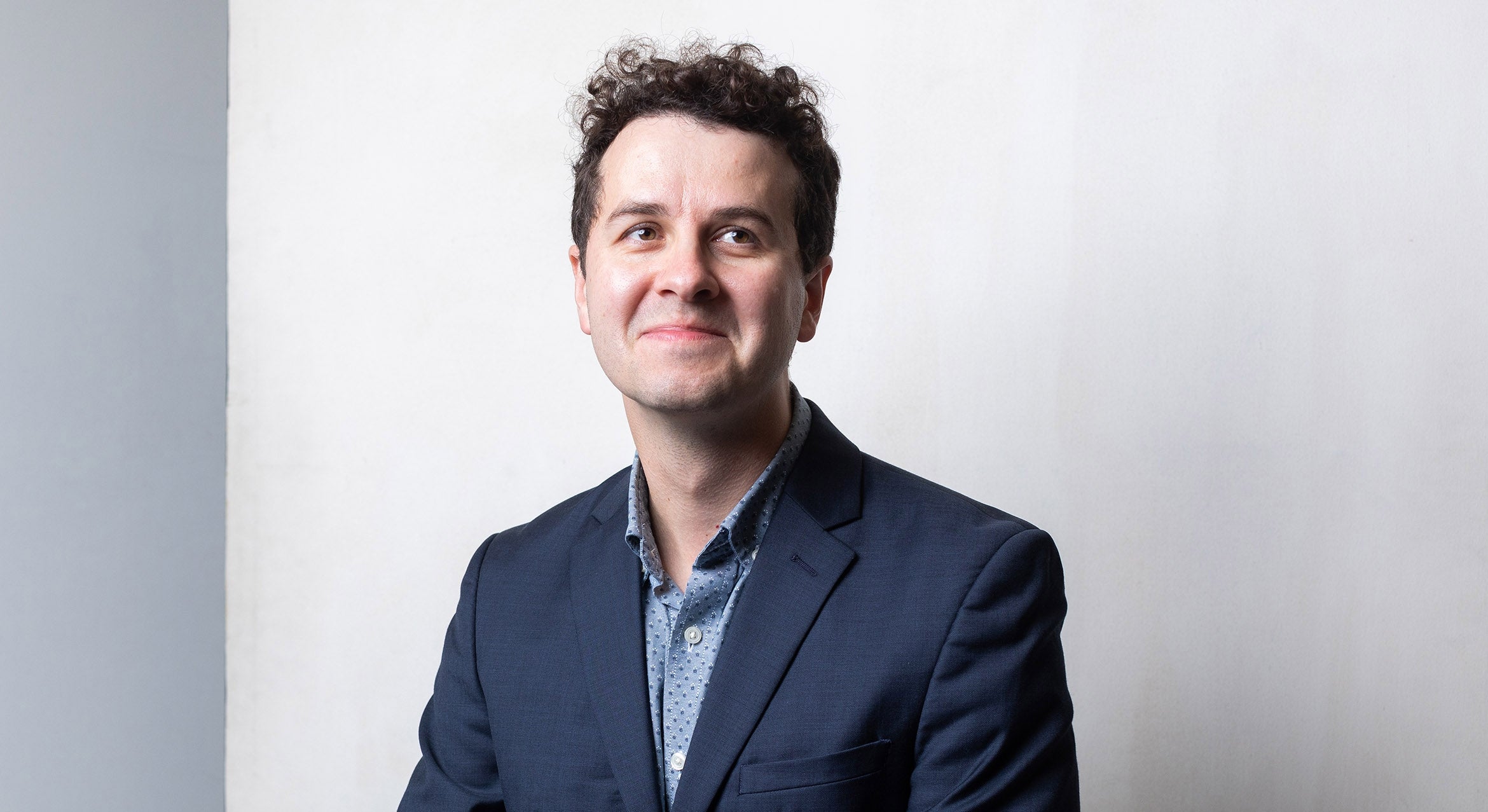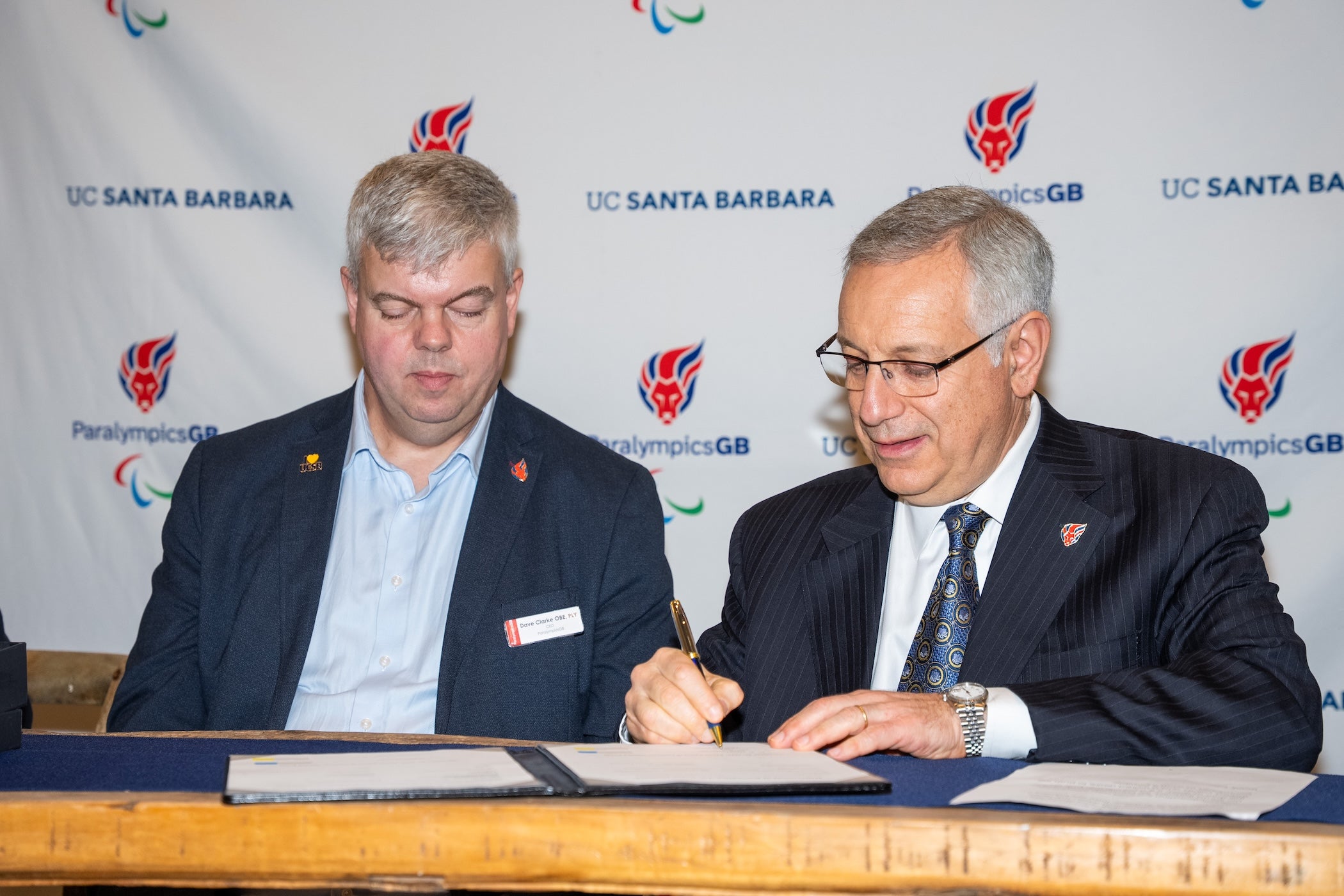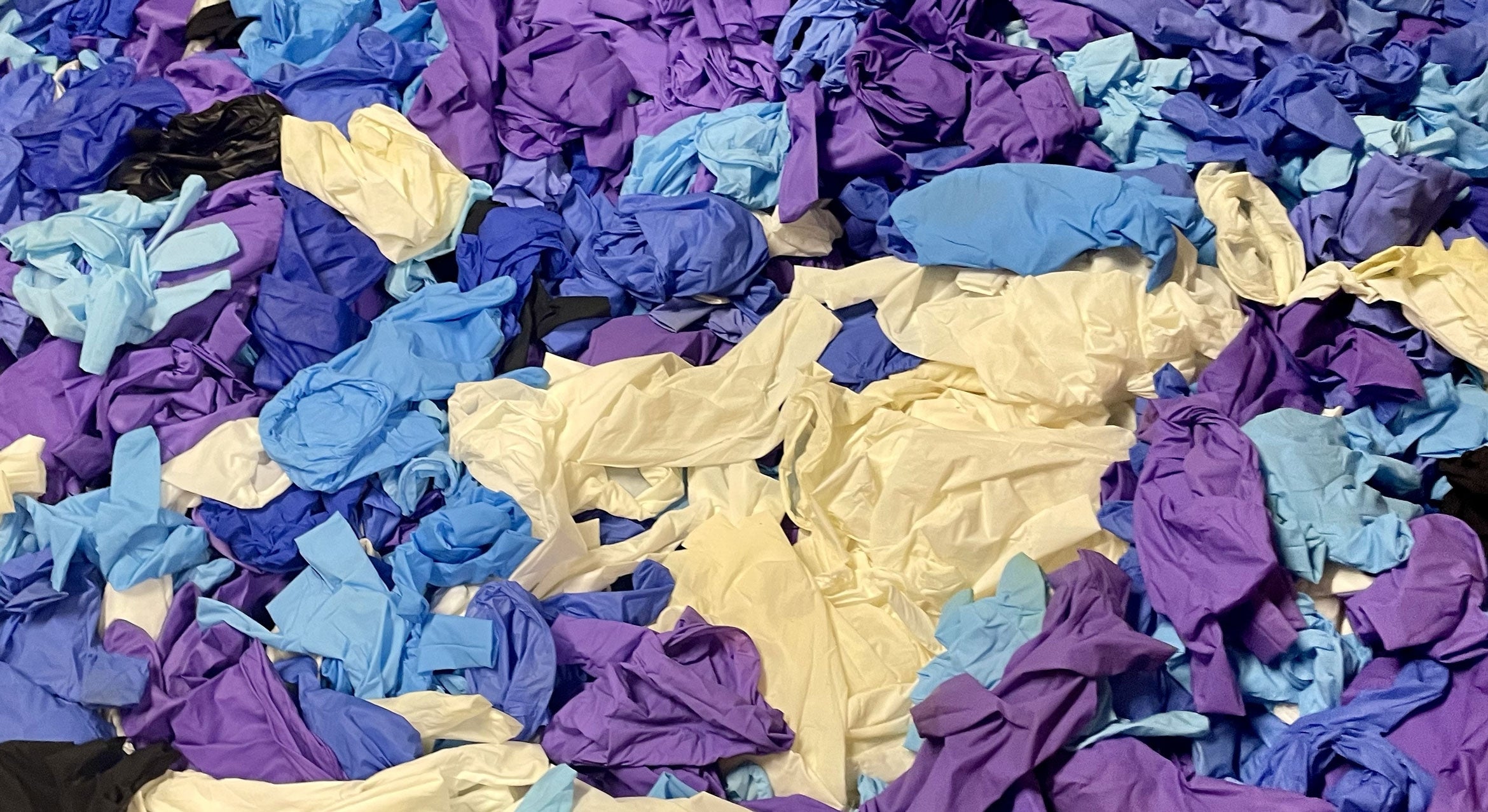
As a cleanroom manager for the Quantum Structures Facility in UC Santa Barbara’s Elings Hall, Rachel Schoeppner’s job is to ensure that the facility functions smoothly for the researchers and students who use it. “I do a little bit of everything — tool installations, maintenance, troubleshooting, training users, financials…,” she said of the lab that creates special coatings in an extremely controlled environment.
Schoeppner doesn’t question the need for protective gear in that setting — even small particles of skin that shed from fingertips can easily contaminate the tiny devices the researchers create, rendering experiments worthless. But when she started her job in 2019, she noticed that the lab was using a huge quantity of single-use gloves, and sending them directly into the general waste stream.
“It was mind-boggling to me. I thought — there’s got to be something we can do. You can recycle rubber tires; you can recycle thin film plastic. I wondered why we couldn't do it with gloves,” said Schoeppner.
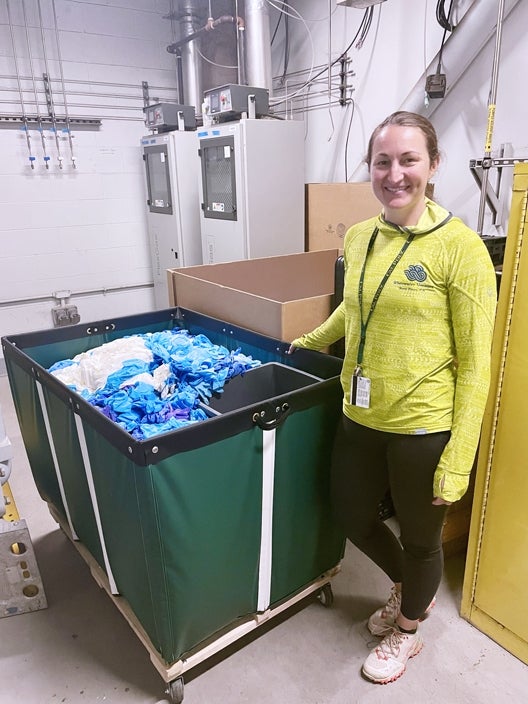
In early 2022, just as she was starting to research how other universities were handling glove disposal, Schoeppner received an email with a funding opportunity from The Green Initiative Fund (TGIF), a UC-wide program that supports sustainable projects. She quickly outlined a pilot program that proposed gathering used, uncontaminated gloves from her lab, as well as others around campus, and shipping them to a facility that processes them into new materials.
“The committee was excited to see Rachel tackle a large source of lab waste that cannot be recycled locally. And her passion
for this project as well as her leadership showed through on her application,” said Campus Sustainability Manager Jewel Persad, who helped review the initial glove recycling project funding proposal.
TGIF granted Schoeppner the funding she requested, and The California NanoSystems Institute pitched in some additional support. Her project was underway.
“Technically it’s called downcycling,” said Schoeppner, “because the gloves are turned into pellets and other materials — and not new gloves. It’s really the step sister of recycling.”
Every other month she and her assistant, Aidan Keough, a second-year physics major, trace a route through campus with a large rolling cart. In the days prior, they remind participating labs that it’s pick-up day, so they find their carefully labeled receptacles outside the labs, usually filled to the brim with nitrile gloves, in blue, purple and white.
It’s a hands-on job. After dumping the bins’ contents into the cart, Schoeppner and Keough often have to pick through the piles to lift out errant pieces of trash as well as latex gloves, which can’t be downcycled through this program.
Navigating through 11 buildings and stopping at 50 pickup sites, the two typically spend at least three hours on the task, which Schoeppner finds “immensely rewarding.”
“I always look forward to pick-up day,” she said. “It’s the one time I can get a visual reminder of what this project is actually accomplishing.”
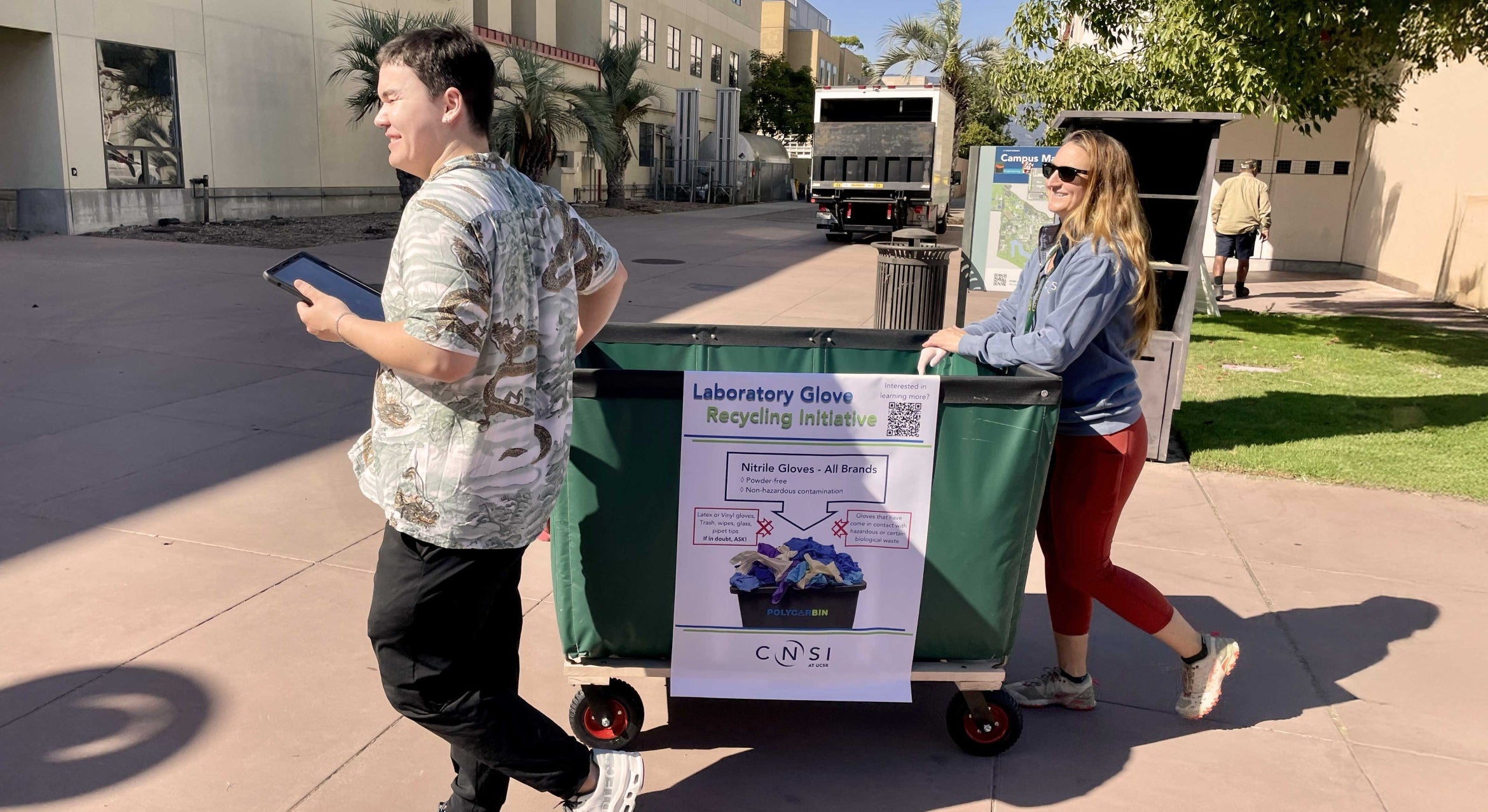
Since receiving the funding, the program has diverted over 4,000 lbs of single-use plastic from the waste stream. When the program first launched, 25 labs from five different departments signed up to participate. Now 40 labs within 10 different departments save and contribute their used gloves.
“Rachel has been very successful at building support for the project with on-campus partners,” said Persad.
When new labs join the effort, they are required to provide some financial support. This has enabled Schoeppner to spread the cost among its growing number of participants, making it more affordable to each.
Increased funding has also had a practical impact. Schoeppner has been able to purchase a larger cart, which has made pick-up days more efficient. And as the volume of gloves has increased she’s also switched to a more affordable vendor that deals with the larger quantities the program is now processing.
Schoeppner is a trained scientist and her work as a lab manager keeps her busy. Since the glove recycling project is not a part of her official duties, she calls it her “passion project,” and one that’s equipped her with some organization and fundraising skills she didn’t previously have. “Because the motivation is there, I’ve just learned to figure things out,” she said.
Persad points out that the project has benefits for the campus beyond simply diverting used gloves from landfills.
“It helps create a culture of sustainability and gets lab users engaged in thinking about waste created, and can lead to more waste reduction efforts and innovative solutions,” she said.
Schoeppner agrees, and hopes she can convince even more labs on campus to join the effort and even serve as a model for other campuses in the UC system, perhaps even beyond.
Modestly, Schoeppner calls the success of her program to date a “pleasant surprise.”
Even so, she has further plans. She hopes to source more funding to sustain and expand the program, since the project aligns with systemwide sustainability goals.
“When you have a vision, and you work hard and it comes to fruition, it’s really special,” she said. “It may be a drop in the bucket in terms of the plastic crisis, but every little bit helps.”
Learn more about the Glove Recycling Program or have your lab join the effort using this link.
